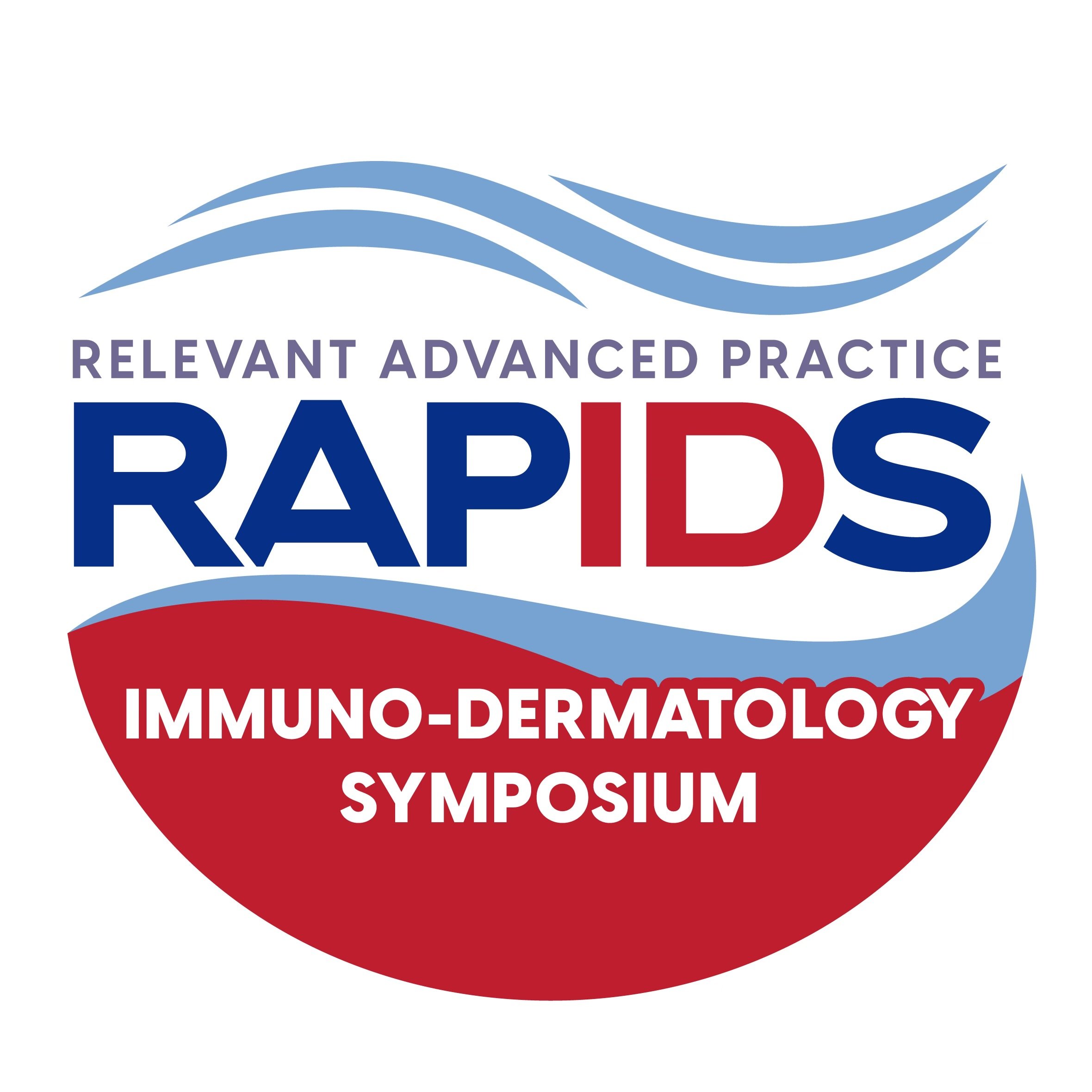RAPIDS Clinical Insights - Day 1
- In:
Clinical Practice,
Professional Development
Day 1 Clinical Insights from the Inaugural RAPIDS Conference at the Hyatt Regency Grand Reserve in San Juan, Puerto Rico.
Thursday, April 10, 2025
Cytokines, Chemokines, Oh My… (Peter Lio, MD, and Douglas DiRuggiero, PA-C)
- Cytokines are small secreted proteins released by cells that have a specific effect on the interactions and communications between cells. Autocrine (acts on self), Paracrine (acts on nearby), Endocrine (acts on distant).
- Cytokines are messenger proteins that tell other cells what to do, while chemokines are like shepherds that guide immune cells to their proper locations using chemotaxis.
- Cytokines can be anti-inflammatory or pro-inflammatory.
Yellow Brick Road to PsO/PsA - Why I Choose Which Path (Monica Richey, NP, and Christopher Sayed, MD
- Psoriasis comorbidities: cardiometabolic risks, mental health/suicidality, solid organ and lymphoma cancers, inflammatory bowel disease (IBD), and chronic obstructive pulmonary disease (COPD).
- Psoriatic arthritis is one of the spondyloarthropathies, which also include ankylosing spondylitis, inflammatory bowel disease (IBD), reactive arthritis, and spondyloarthropathy.
- 3 Psoriatic arthritis in rheumatology follows GRAPPA guidelines, as treating it is also trial and error, and many times needs more than one medication to treat the disease.
Connective Tissue Diseases for the Derm Provider (Monica Richey, NP)
- Systemic Lupus Erythematosus presentations can include malar rash, discoid, photosensitivity (can be very severe), oral ulcers (could be just one), subacute cutaneous lupus (skin of color can look like psoriatic), lupus profundus/pannicultis, livedo reticularis
- If you suspect bullous lupus, make sure you are doing DIF studies with a dermatopathologist to accurately differentiate between bullous pemphigoid and bullous lupus.
- CREST: Calcinosis, Raynaud’s, Esophageal dysmotility, Sclerodactyly, telangiectasias
- While Scleroderma is angiopathy (problems with the blood vessels), dermatomyositis affects the muscles with elevated muscle enzymes.
The Wizard of HS (Christopher Sayed, MD)
- Pathogenesis of HS: Chronic inflammatory disease of the follicles, hyperkeratinization creates a blockage of the follicle, rupture, and release of inflammatory debris into the dermis, then causes tunnels filled with debris.
- The adaptive immune response is likely to blame. Gamma-secretase / notch signaling can be inflammatory through Th-17, JAK/STAT, and inflammasomes. SOX9 is a gene transcription factor that may be involved.
- Pipeline of HS: Povorcitinib (oral JAK1 inhibitor), sonelokimab (IL-17A and IL-17F Nanobody), Remibrutinib (BTK inhibitor), Anakinra and MEDI8968 (IL-1 antagonist), Canakinumab (IL-1beta), Bermekimab (IL-1alpha…study was terminated), Orismilast and Apremilast (PDE4 inhibitor), IL-23s don't seem to be helpful, AND Complement C5a: vilobelumab, avacopan.
Gut Skin Connection Part 1 (Douglas DiRuggiero, PA-C and Kimberly Orleck, PA-C)
- Our gut is a massive endocrine and immune organ that impacts illness development and the progression of disease.
- The mesenteric (gut) epithelium should have tight junctions between the epithelial cells. In Leaky Gut Syndrome, the damaged junctions allow increased intestinal permeability, which leads to immune dysregulation.
- The microorganisms that live inside and on humans are known as our microbiota. These microorganisms are estimated to outnumber human somatic and germ cells by a factor of ten.
Gut Skin Connection Part 2 (Douglas DiRuggiero, PA-C and Kimberly Orleck, PA-C)
- IBD: Crohn’s Disease and Ulcerative Colitis are chronic inflammatory autoimmune conditions of the GI tract. About 40-50% of these patients will have extra-intestinal manifestations like Erythema Nodosum, Pyoderma Gangrenosum, Sweet's syndrome, Apthous ulcers, Cutaneous Crohn's, and, of course, Psoriasis.
- ALL patients with IBD should have skin cancer surveillance, especially those with current or past thiopurine use.
- 90% of patients with Dermatitis Herpetiformis have celiac disease, but only about 10-15% of celiac patients have DH (grouped papules and vesicles often on extensor surfaces caused by the deposit of IgA in the skin.

